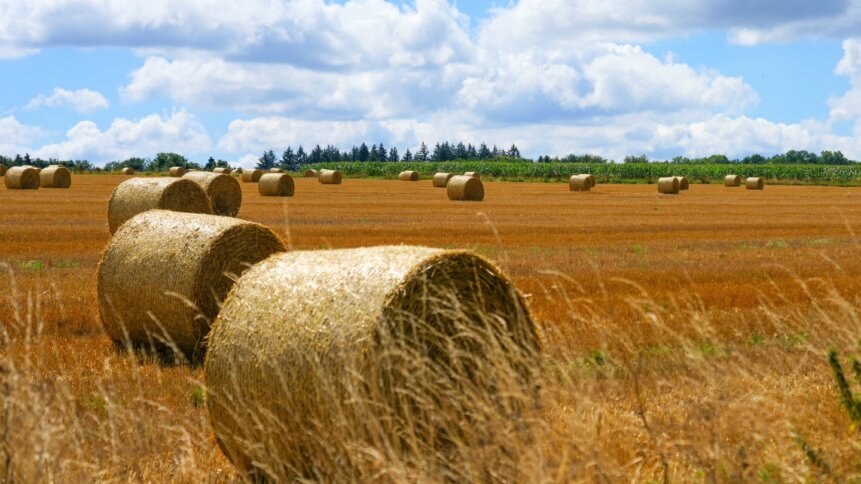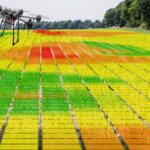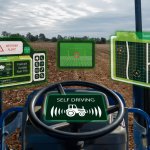Farm management software – agriculture’s ‘super app’

Farming is proving to be somewhat of a growth industry for digital data. Improvements in satellite imagery offer a birds-eye view of crop health across the globe. And when governments are warning farmers to be on the lookout for cybercriminals, you can be certain that digital transformation in agriculture is booming. For more evidence, it’s worth looking at the number of software vendors in the farming sector. Results presented at the Pacific Asia Conference on Information Systems suggest that food producers have a choice of around 180 different farm management software products from as many as 130 different providers.
Today, farm management software has evolved into a kind of ‘super app’ for the agricultural industry and brings together a range of key features. Basic functions include budgeting and sales performance, task scheduling, as well as systems for machinery management. And newer capabilities are being added all the time – for example, to improve food traceability and promote quality assurance. Sensors and other precision agritech also make valuable digital contributions that ultimately help bring food to the table.
Fruitful endeavors
Considering the supply chain, BIS Research – a market intelligence firm headquartered in Fremont, US – breaks the value transfer process down into six elements. These stakeholder groups comprise input companies, farmers, trading & processing companies, food companies, retailers, and, lastly, consumers. “Farm management software, including data analytics, has a huge influence on the entire value chain, starting from managing inputs to the end user,” said Rakhi Tanwar, Principal Analyst at BIS Research, in a recent presentation. “It allows efficient resource allocation as well as helping in the overall management of farming operations.” And the range of use cases are definitely worth exploring.
The capability of fertilizers in boosting crop yields has been good news in terms of putting food on the table. But the process has taken its toll on the soil. There are other environmental burdens to consider as well. The chemical production of synthetic nitrogen fertilizer contributes to greenhouse gas emissions. But stepping back and reducing the dependency of modern agriculture on chemical fertilizers requires giving farmers a helping hand. And this is driving big investments in field sensors and other technologies, which can provide a much more precise measure of crop health.
Thanks to this digital knowledge – and the analytics that go with it – farm management software can incorporate these useful real-time views. The output gives farmers an up to date digital guidebook that helps them better target fertilizer application so that resources can be used more sparingly. As Tanwar points out, farm management software bridges the gap between the various hardware systems and sensors. And popular solutions automate this data transfer, keeping manual inputs to a minimum.
Big players in the farm management software space include US firms Agworld, Conservis, Trimble, and Farmlogs; India-based FarmERP; Australian firm AgriWebb; and AGRIVI from the UK.
Green targets
Across all firms, a common theme is the ability of farm management software to raise the game on sustainability. On its blog, AGRIVI references findings from The CGIAR Research Program on Climate Change, Agriculture and Food Security, which estimates that agriculture and food production contribute up to 29% of global greenhouse gas emissions. We’ve already touched on fertilizer contributions, but there are other greenhouse gas emissions sources to consider too.
Farm machinery powered by fossil fuels adds to the release of carbon dioxide. And it’s common knowledge that raising livestock is considerably resource-intensive, releasing various greenhouse gases in the process. Plus there’s the loss of carbon locked up in the soil from any land clearing that occurs to create fields for crop planting. The message is a strong one, but the good news is that knowledge-based approaches enabled through farm management software can make a positive impact. Data-driven systems give farmers the tools to prioritize sustainability and confer confidence in the decisions made.
What’s more, there’s lots of innovation making its way through solutions pipeline. FarmERP’s developers are looking at the use of blockchain to ‘track the provenance of agriproducts’. According to the firm, supply chain stakeholders can log into the blockchain platform and make use of the secure ledger to safeguard data from being tampered with. Trimble’s ‘Virtual farm’ puts all farm management software features into a 3D view, simplifying the workflow and making options easy to navigate for users. Tabs include options such as ‘Field Variability’, ‘Weed Management’, and ‘Application Consistency’. There’s also a return on investment (ROI) calculator to highlight the savings that could potentially be realized through precision agriculture.
There are major financial gains to be made through the efficient use of farm management software, which explains – in part – why big food producers are investing in platforms for their suppliers. Nestle issued a responsible sourcing standard in 2018 [PDF], and today the multinational uses farm management software to create traceability across its supply chain. The food producer reportedly has 376 factories in 81 countries, and by equipping suppliers with farm management software, it’s able to track KPI’s that relate to its responsible sourcing commitments, such as soil health.
Big data can attract suspicion in some quarters, but it’s hard to object to digital information being used to nurse the planet back to health and make the future of food more sustainable.










